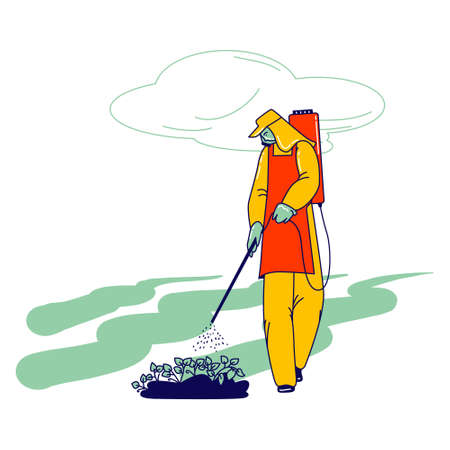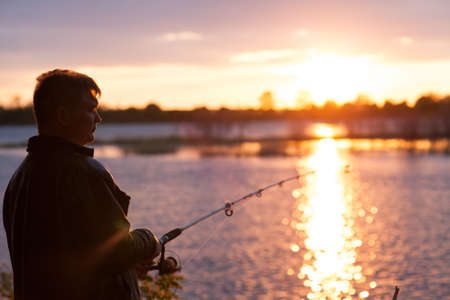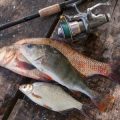Introduction to British Weather and Angling
If you’ve spent any time on the banks or shores of the UK, you’ll know that our classic British weather is as much a part of angling as the rods and reels we carry. From sudden downpours to gusty winds that seem to come from nowhere, the unpredictability of our climate keeps every fishing trip fresh—and sometimes a bit challenging! But rather than curse the blustery conditions, savvy anglers learn to embrace them. By understanding how these weather patterns work, especially those notorious windy spells, you can turn what many see as an obstacle into an advantage. In this article, I’ll be sharing some friendly insights on why decoding British weather isn’t just about checking if you need your waterproofs—it’s about gaining that extra edge when casting in tricky winds. So, grab your brew, settle in, and let’s look at how a bit of local weather knowledge can give your casting game a real boost.
2. Common UK Weather Patterns and Wind Conditions
Let’s face it, British weather is famously unpredictable, and as any seasoned angler will tell you, understanding the local patterns can make all the difference when you’re out casting in a hoolie. Britain’s climate is shaped by its island status—meaning we get a real mix of weather fronts rolling in off the Atlantic, and winds that keep us guessing from one session to the next. For those looking to master their casting on blustery days, here’s a breakdown of the most common wind conditions you’ll encounter at UK fishing spots, peppered with some local lingo and tales straight from the bank.
| Wind Type | Typical Direction | What It Means for Anglers | Local Lingo |
|---|---|---|---|
| Southwesterlies | From the southwest (Atlantic) | Mild, moist air; choppy waters; often brings “classic British drizzle” but also stirs up food for fish—great for lively sessions on rivers and lakes. | “A proper sou’wester” or “Coming in fresh off the Channel” |
| Easterlies | From the east (Continental Europe) | Colder, drier air; tends to flatten water surfaces and slow down fish activity—often called “the dreaded easterly” among old hands. | “Beast from the East” or simply “an easterly blow” |
| Blustery Days | Variable/gusty (any direction) | Unpredictable gusts that test your casting skills; sometimes makes for tough fishing but also keeps things interesting—perfect for practicing accuracy and line control. | “It’s blowing a hoolie!” or “Bit breezy today, mate” |
On those classic windy days, you’ll often hear anglers swapping stories of battling a ‘proper gale’ down by the local reservoir or adjusting tactics because “the wind’s switched again.” One memorable session at Rutland Water springs to mind: facing into a stiff southwesterly, I found my distance casts cutting through chop far better when I aimed slightly upwind and let the breeze carry my lure. Meanwhile, old timers along the bank reckoned it was just another day to “let the wind do the work”—a handy tip when dealing with these ever-changing British breezes.

3. Reading the Water: Interpreting Wind on the Bank
When it comes to British fishing, understanding how wind interacts with your chosen water is a bit of an art—and it’s something every angler picks up from hours spent bankside, chinwagging with mates and watching the weather do its thing. Whether you’re perched on a riverbank, casting into a stillwater lake, or braving the briny air at the seaside, the wind will always have a say in where fish hold up and how you should approach your cast.
Spotting Wind Patterns Like a Local
First off, have a gander at the ripples and waves—these telltale signs are your best mates for reading wind direction and strength. On lakes, a stiff breeze blowing into your swim can push food and baitfish right up against your side, drawing in bigger fish for a snack. Meanwhile, a crosswind might scatter surface debris, making your presentation trickier but sometimes fooling wary feeders. Down by the river, wind over water can break up the surface glare (handy for staying hidden) but can also make float control a right faff if you’re not careful.
Top Tips for Every Venue
- Lakes: If the wind’s pushing toward you, expect fish to follow—especially carp and bream. Don’t be shy about getting stuck in along the windward bank.
- Rivers: Side winds can make trotting a float tricky; try tucking into sheltered spots or using heavier floats for better control.
- The Seaside: Onshore breezes can churn up food for species like bass and flounder but keep an eye on safety—big gusts can change tidal conditions faster than you’d expect.
Banter-Worthy Insight
If you’re ever unsure, just do what any self-respecting local would: stick your finger in the air or watch which way someone’s hat blows off! Jokes aside, learning to read these natural cues will give you that edge when fishing windy conditions—and there’s no better feeling than outsmarting both the weather and the fish. So next time you’re down at your peg having a natter with fellow anglers, swap wind stories and see who’s got the sharpest eye for spotting those subtle changes across Britain’s wild waters.
4. Gear and Tactics for Blustery British Days
If you’ve ever found yourself on a UK bank or shoreline, rod in hand and hat nearly flying off, you’ll know the wind can turn a promising session into a proper challenge. Over time, I’ve learned that having the right kit and tactics up your sleeve really does make all the difference when the gusts pick up. Here’s some friendly advice from many a blustery day out across England, Scotland, and Wales.
Tackle Choices That Hold Up in the Wind
When it’s blowing a hoolie, lighter rods and lines just don’t cut it—they get tossed around far too easily. What you want is solid, reliable gear:
| Tackle Element | Recommended Choice for Windy Conditions |
|---|---|
| Rod Length & Power | 9ft+ medium-heavy rods offer better control and punch through the breeze. |
| Main Line | Braided line (15-20lb) with low stretch; it cuts through gusts and keeps you connected. |
| Leader Material | Fluorocarbon leader (10-15lb); less visible and resists abrasion from wind-blown debris. |
Lures & Baits: What Works a Treat?
Wind stirs up the water and often makes fish more aggressive, but only if your lure gets to them. Here’s what I’ve found works best:
- Weighted soft plastics: They cast further and hold their line better in choppy conditions.
- Metal spoons & spinners: Their extra weight means less wind resistance—plus they send out strong vibrations that cut through murky water.
- Larger plugs or crankbaits: Go for chunky profiles that stay stable and visible when visibility drops.
Casting Tactics to Beat the Breeze
You’ll want to adapt your casting style too. Side-arm casts tend to stay lower and out of the worst of the wind, while keeping your back to the breeze gives you extra distance. Don’t be afraid to shorten your leader slightly; it helps prevent tangles when things get gusty.
Quick Tips from the Bank
- Check local forecasts before heading out—Met Office updates are your best mate here.
- Peg down your kit bag or use banksticks—nothing worse than chasing tackle across a field!
- A pair of polarised sunglasses helps spot fish movement even when the surface is ruffled by wind.
The Bottom Line
No one can control the British weather, but with practical tackle choices and a few tried-and-tested tactics, there’s every chance you’ll turn those tricky blustery days into memorable ones. Tight lines!
5. Practical Casting Techniques for Windy British Weather
If you’ve ever stood on a Cornish cliff or the shingle of Chesil Beach with the wind roaring in your lugholes, you’ll know that British weather can be as stubborn as an old boot. But don’t let a stiff breeze send your bait flying into next week—mastering some practical casting techniques is what separates the seasoned angler from the soggy novice. Here’s how to keep your line tight and spirits high when it’s blowing a hoolie.
Step 1: Choose the Right Gear
When the wind’s up, leave the featherweight rods for calmer days. Opt for a sturdy beachcaster or carp rod with a bit of backbone. Use heavier leads (try 5oz or more) to anchor your rig and minimise drift. Local legend Dave from the Mersey swears by pyramid sinkers—they dig in and hold, even when gusts are rattling your rod rest.
Step 2: Adjust Your Casting Angle
Casting straight into the wind is a recipe for frustration and tangles. Instead, angle your cast slightly downwind—aim about 30 degrees off the wind direction. This helps your lead punch through the gusts and gives your line less slack to flap about. I remember a blustery session on Loch Lomond where this trick put three nice pike on the bank while everyone else was untangling birds’ nests.
Step 3: Keep it Low and Fast
Forget lofty overhead casts—go sidearm or use a pendulum swing, keeping your cast low to cut beneath the worst of the wind. The quicker, flatter trajectory means less time for gusts to grab hold of your tackle. On a wild day at Dungeness, I watched an old hand whip his bait out under the wind with a low side flick—and he was into fish before my line even hit the water.
Bonus Tip: Shorten Your Leader
A shorter leader keeps things tight and reduces looping in crosswinds. If you’re using braid, all the better—the thin diameter slices through air resistance nicely.
Real-World Wisdom
From Pembrokeshire to Norfolk Broads, every local has their own windy weather hack, but they all boil down to this: adapt, stay patient, and don’t be afraid to experiment. Next time you feel that unmistakable British breeze coming in sideways, remember these tricks—and you’ll soon be telling your own blustery success stories down at the pub.
6. Angler’s Etiquette and Safety in Windy Conditions
If you’ve ever spent a blustery afternoon on the British coast or riverside, you’ll know that strong winds bring their own set of challenges—not just for your casting, but also for safety and camaraderie among fellow anglers. Let’s have a quick run-through of the essentials to keep both your kit and yourself safe, while upholding that classic British angling etiquette.
Respect Personal Space
Windy conditions often mean lines can stray off course. Give extra room between yourself and others when picking your swim or peg. A courteous “Alright if I set up here?” goes a long way, especially when gusts might send your line or tackle further than intended.
Secure Your Gear
Even the sturdiest rod rests and bait boxes are at risk of being toppled by sudden gusts. Weigh down lighter items with stones, use rod leashes where possible, and keep heavier gear low to the ground to prevent accidents. If you’re on the move, make sure everything is packed away securely—no one wants to see a prized landing net sailing down the bank!
Stay Visible and Communicate
Visibility can drop during squalls, so it’s good practice to wear bright or reflective clothing. If you’re casting near others, a polite heads-up before whipping your line through the wind is always appreciated. Remember, even an experienced angler can misjudge a cast in unpredictable gusts.
Keep Safety First
On exposed banks or slippery rocks, maintain firm footing and avoid overreaching—especially with wet surfaces underfoot. Always check local weather updates before heading out; if winds are forecast to pick up dangerously, it’s best to postpone your trip. No fish is worth risking a tumble into chilly British waters!
Minding Our Manners
A friendly nod or greeting is part of what makes British angling culture so welcoming—even in rough weather. Share tips about wind direction or tricky spots with newcomers, offer help if someone’s gear takes a tumble, and remember: we’re all in this together against the elements.
By taking these simple steps—securing equipment, respecting space, staying alert, and keeping that signature British politeness—you’ll not only stay safer in windy conditions but make everyone’s day by the water that bit more enjoyable.
7. Conclusion: Making the Most of the British Weather
If there’s one thing that unites all UK anglers, it’s our collective dance with the ever-unpredictable British weather. Yes, she can be a fickle friend—one minute a gentle breeze, the next a howling gale—but that’s half the charm and challenge of fishing here. Rather than seeing wind and showers as obstacles, think of them as invitations to sharpen your skills and discover new tactics. Every gust and shift in pressure is a lesson, another story for the bank or pub after a day out.
Embracing Britain’s ever-changing climate means packing that extra layer, keeping an eye on those clouds, and sometimes just laughing at the absurdity of four seasons in one afternoon. But more importantly, it means seizing those moments when wild weather creates perfect conditions for big fish—and even better memories. So next time you step onto the bank or wade into the surf, remember: a bit of wind might make casting trickier, but it also makes every bite and every catch that much sweeter. The unpredictable British weather isn’t just something to endure—it’s what makes our fishing adventures truly unique. Tight lines, whatever the forecast!

